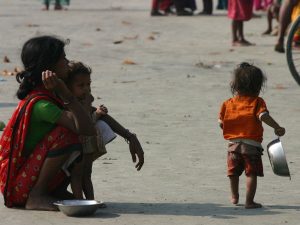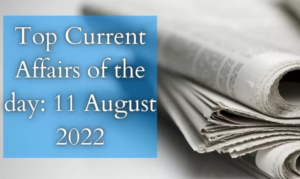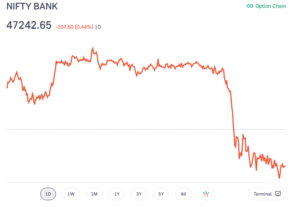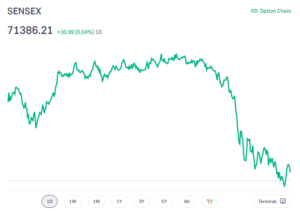
Haryana wins 12th Senior Men’s National Hockey Championship
Haryana has emerged as the champions of the 12th Senior Men’s National Hockey Championship by defeating Tamil Nadu 3-1 in the shootout after the final ended 1-1 in the regulation time. The tournament was held in Bhopal, Madhya Pradesh from April 6 to 17, 2022. Haryana has won the trophy for the first time since 2011. Karnataka prevailed over Maharashtra 4-3 in the third/fourth place classification match.
Noted Odia singer and musician Prafulla Kar passes away
Popular Odia singer and music director Prafulla Kar has passed away following age-related ailments. Kar was an eminent musician, singer, lyricist, writer and columnist. He received the prestigious Padma Shri award in 2015.
He started his career as a singer in 1962 with the Odia film Shri Shri Patita Pabana. In 1975, he became a music composer in the film Mamata which turned out to be an instant hit. Some of the movies which would forever carry the legacy of his melodious music are Batighara, Shesha Shrabana, Sindura Bindu, Bandhu Mahanti, Balidaan and Ram Balaram.
Lt Gen Manoj Pande named as India’s next Chief of Army Staff
Lieutenant General Manoj Pande has been appointed as the next Chief of Army Staff. Lt Gen Pande is the incumbent Vice-Chief of the Army. He will take over from General MM Naravane, who is set to retire on April 30, 2022. Lt Gen Manoj Pande is the first-ever officer from the Corps of Engineers to be appointed as Army Chief.
He has served as chief engineer in the UN mission in Ethiopia and Eritrea. He was the Commander-in-Chief Andaman and Nicobar Command (CINCAN) from June 2020 to May 2021. Outgoing army chief Gen MM Naravane is seen as the frontrunner for the Chief of Defence Staff’s (CDS) post, that has been vacant since the death of India’s first CDS Gen Bipin Rawat in an air crash last December.
Karnataka named Robin Uthappa as brand ambassador for Brain Health Initiative
The Karnataka State Government in association with NIMHANS and Niti Ayog launched the Karnataka Brain Health Initiative (Ka-BHI) in January. Indian cricketer Robin Uthappa has been recently appointed as the brand ambassador for Karnataka- Brain Health Initiative (Ka-BHI). Training of doctors and preparations to start Brain Health Clinics in the three pilot hospitals has also commenced.
While training of doctors and preparations to start Brain Health Clinics in the three pilot hospitals – Jayanagar General hospital in Bengaluru Urban, SNR Hospital in Kolar and District Hospital in Chickballapur has begun.
Important takeaways for all competitive exams:
- Karnataka Capital: Bengaluru;
- Karnataka Chief Minister: Basavaraj S Bommai;
- Karnataka Governor: Thawar Chand Gehlot.
A new Children’s Book titled “The Boy Who Wrote a Constitution ” has been Released
On the occasion of Dr BR Ambedkar’s 131st birth anniversary, a new book titled “The Boy Who Wrote a Constitution: A play for Children on Human Rights” authored by Rajesh Talwar, a fact-based drama on Bhimrao Ramji Ambedkar’s own recollections of his childhood has been released. It is published by Ponytale Books. Talwar’s also authored books include “The Vanishing of Subhash Bose”, “Gandhi, Ambedkar, and the Four-Legged Scorpion”, and “Aurangzeb”.
The essence of the day:
This book conveys to the children about the challenging boyhood and grown-up years of Ambedkar who had written the Constitution of India and became India’s first law minister.
Tropical Storm Megi: Landslides and floods caused Mass Destruction in Philippines
Tropical Storm Megi wreaked havoc on the Philippines, killing at least 167 people in landslides and floods. According to the national disaster organisation, another 110 persons are missing, and 1.9 million people have been impacted. Hillside avalanches and overflowing rivers wreaked havoc on the villages surrounding Baybay city in central Leyte province.
About Tropical Storm Megi:
- Tropical Storm Megi, also known as Tropical Storm Agaton in the Philippines, was a minor but devastating tropical storm that hit the Philippines in April 2022.
- It’s the third tropical depression and second tropical storm of the typhoon season in the Pacific for 2022.
- Megi arose from a convection zone in the Philippine Sea, travelling northwestward into the Leyte Gulf, where it stayed nearly stationary, slowly tracking eastward.
- Megi made two landfalls, one at Guiuan’s Calicoan Island and the other in Samar’s Basey.
- Before fading, it continued southwestward and reentered the Philippine Sea.
- Tropical storms have become more intense and powerful as a result of human-caused climate change, according to scientists.
- Since 2006, the Philippines has been hit by some of the world’s deadliest hurricanes.
- Because of its location, it has been named one of the countries most vulnerable to climatic calamities.
Important Takeaways for all Competitive Exams:
- The storm made landfall, with sustained winds of up to 65 kilometres per hour and gusts of up to 80 kilometres per hour.
- Megi is the archipelago’s first storm of the year, with an average of 20 such storms per year.
World’s Highest Tunnel connecting Himachal Pradesh to Ladakh to be construed by BRO
BRO Director General Lieutenant General Rajeev Chaudhary announced that the Border Roads Organisation will build the world’s highest tunnel at Shinku La Pass, at 16,580 feet, to connect Himachal Pradesh and Ladakh. He said this while opening the strategically crucial Himachal to Zanskar Road at Shinku La Pass, where more than a half-dozen vehicles crossed from the Zanskar side towards Manali.
Key Points:
- The Border Roads Organisation (BRO), according to Lieutenant General Rajeev Chaudhary of PTI, would begin construction of the tunnel connecting Himachal Pradesh and the Zanskar Valley in Ladakh by July this year. He stated that the Centre has already established BRO’s ‘Mission Yojak’ to carry out this ambitious project.
- The tunnel, which is expected to be completed by 2025, will transform the economy of Zanskar Valley, according to the official.
- Currently, one must travel 101 kilometres on the Leh route from Manali to Darcha, then turn left towards Shinku La Pass and enter Zanskar valley.
- The tunnel’s south portal will be at Shinku La, and the tunnel’s north portal will be at Lhakhang.
- The D-G praised BRO personnel’s efforts in reopening the Shinku La-Padum and Manali-Leh roads in record time.
Important Takeaways for all Competitive Exams:
Zanskar Valley:
- The Chadar Trek, also known as the Frozen River Trek, is only accessible during the winter months in Zanskar.
- Zanskar is recognised for its hazardous terrain for adventure seekers, with treks like the Padum-Darcha Trek, Lugnak Trail Trek, and Zanskar-Sham Valley Trek among the options.
Shinku La:
- Shinku-La Tunnel, also known as Shinkula Tunnel or Shingo-La Tunnel, is a planned motorable tunnel linking Himachal Pradesh’s Lahaul Valley and Ladakh’s Zanskar Valley in Northern India.
Phugtal monastery built by: Jangsem Sherap Zangpo
Khilji Dynasty- Rulers, Rise, Fall and Policies
Khilji Dynasty
The Khalji or Khilji dynasty was a Turko-Afghan dynasty that ruled over the Delhi Sultanate for about three decades, from 1290 to 1320, and ruled over huge swaths of the Indian subcontinent. The second dynasty to rule the Delhi Sultanate of India, it was founded by Jalal ud din Firuz Khalji and came to power in a revolution that signified the transfer of authority from Turkic nobility to Afghans. Its reign is remembered for conquests into modern-day South India and for effectively repelling Mongol invasions of India.
Khilji Dynasty: Rulers
JALAL UD DIN FIRUZ KHALJI (1290 – 1296)
Jalaluddin Khalji was a Turk of Khalji tribe and his forefathers were the inhabitants of Turkistan. Members of his family settled down in India long ago and they served in the reign of Iltutmish and Balban. Jalaluddin was appointed Sar-i-Jandar due to his ability and capability, he rose to this prize post by his merit. Later on, he was appointed governor of Samana. He fought many battles against the Mongols. Being pleased, Kaiqubad invited him to Delhi after the assassination of Nizamuddin and appointed him Ariz-i-Mamalik. The title of Shaista Khan was also bestowed upon him at this occasion. Soon his influence enhanced in the army and administration. He organized all the Khalji nobles, officers and soldiers under his leadership. He also got the cooperation and support of Turkish nobles and officers. Thus the power of the Khaljis went on increasing. After killing the sultan Kaiqubad Jalaluddin became the regent of infant Kayumars for some days. Later on, Kayumars was also put to death and Jalaluddin occupied the throne himself.
ALAUDDIN KHALJI (1296 – 1316)
Ala-ud-din (died 1316) was the second sultan of the Khalji dynasty of Delhi in India. His totalitarian rule marked the beginning of the imperialistic period of the sultanate and the rise to power of native Indian Moslems.
Not much is known of the early life of Ala-ud-din. He was appointed governor of Kara by his uncle and father-in-law, Sultan Jalal-ud-din Khalji, in 1292. Three years later he invaded Malwa, captured Bhilsa, a wealthy commercial center, and drew up plans to usurp the sultanate. In 1296 he became the first Moslem invader to penetrate the Vindhya Mountains into the Deccan and, after defeating the Hindu raja of Devagiri, obtained a booty that contained 17,250 pounds of gold, 200 pounds of pearls, and 28,250 pounds of silver. Supported by crack troops and armed with these riches, he assassinated his father-in-law and proclaimed himself the sultan of Delhi in 1296.
Alauddin Khalji died in January 1316. Thereafter, the sultanate witnessed chaos, coup and succession of assassinations. Malik Kafur became the sultan but lacked support from the amirs and was killed within a few months.
Over the next three years following Malik Kafur’s death, another three sultans assumed power violently and/or were killed in coups. First, the amirs installed a six-year-old named Shihab-ud-din Omar as sultan and his teenage brother, Qutb ud din Mubarak Shah, as regent. Qutb killed his younger brother and appointed himself sultan; to win over the loyalty of the amirs and the Malik clan he offered Ghazi Malik the position of army commander in the Punjab. Others were given a choice between various offices and death. After ruling in his own name for less than four years, Mubarak Shah was murdered in 1320 by one of his generals, Khusraw Khan. Amirs persuaded Ghazi Malik, who was still army commander in the Punjab, to lead a coup. Ghazi Malik’s forces marched on Delhi, captured Khusraw Khan, and beheaded him. Upon becoming sultan, Ghazi Malik renamed himself Ghiyath al-Din Tughluq, becoming the first ruler of the Tughluq dynasty.
Khilji Dynasty: Rise of Empire
With the succession of Jalal-ud-din Khalji as Delhi Sultan on June 13, 1290, the Khalji Dynasty was established. In the beginning of the year 1290 A.D., the Mamluk dynasty governed Delhi. Muiz ud din Qaiqabad was the tenth and final line ruler, and it is reported that Jalal-ud-din Khalji assassinated him. When a group of Qaiqabad nobles attempted to install his newborn son, Kayumars, on the throne, Jalal-ud-din assassinated them, and the infant was ousted. Then Jalal-ud-din seized the throne and was proclaimed Sultan of Delhi on June 13, 1290, marking the start of the Khalji dynasty in Delhi.
Khilji Dynasty: Fall of Empire
During the Khalji Sultans’ reign, the Mongols invaded Delhi on a regular basis. It undermined the empire and jeopardised the country’s security. The Mongols were mostly raiders. By invading and plundering the country on a regular basis, they weakened the government financially.
Khilji Dynasty: Policies
The Khilji dynasty’s economic policy and administration were exceedingly rigorous, and everything was in the hands of the King. The situation of peasants, businesspeople, and the average man was dire and difficult to maintain at times. Khilji monarchs, particularly Alauddin Khilji, altered expenditure methods solely to build his treasury, fulfil his obligations, and stockpile for his expansionist wars. He simply increased agricultural taxes from 20% to 50%, payable in the form of grain and rural produce or cash, and he eliminated instalments. Alauddin Khilji imposed four different types of taxes on non-Muslims in the Sultanate: jizya (poll tax), kharaj (land tax), kari (house tax), and chari (field duty). He also proclaimed that his Delhi-based officers, as well as local Muslim jagirdars, khuts, mukkadims, chaudharis, and zamindars, might seize half of all output as a cost on standing yield in order to fill sultanate storerooms by force.
Khilji Dynasty: FAQs
Who started Khilji Dynasty?
The second dynasty to rule the Delhi Sultanate of India, it was founded by Jalal ud din Firuz Khalji and came to power in a revolution that signified the transfer of authority from Turkic nobility to Afghans.
Who defeated Khilji Dynasty?
On the night of January 4, 1316, Alauddin died. According to Barani, Kafur murdered him, according to “some individuals.” Kafur retrieved Alauddin’s body from the Siri Place late at night and had it buried in Alauddin’s mausoleum (which had previously been erected before Alauddin’s death).
How many kings are there in Khilji Dynasty?
Only three monarchs of the Khilji dynasty ruled over Delhi. The emperors of the Khilji dynasty, also known as the Khalji dynasty, are notable for their ruthlessness, conquests in South India, and successful defences against Mongol invasions.
How did Khilji Dynasty start?
Jalal-ud-din Between 1290 until 1320, Khilji ousted Balban’s heirs and established the Khilji Dynasty, which dominated huge sections of South Asia. The Delhi Sultanate of India was ruled by the second dynasty. The Khilji dynasty took its name from an Afghan village.
Ethosh Digital has opened its first IT Training & Services centre in Leh.
Leh has taken the first step in building an IT sector. SS Khandare, the Additional Director General of Police for Ladakh, has opened Ethosh Digital’s first IT Training and Services centre in Leh.
Ethosh Digital is a multinational company established in California that specialises in digital communications and AR-VR products. Ethosh Digital was assisted in establishing the first IT office in Ladakh by Aseem Foundation, a Pune-based NGO that works in India’s border regions in the sectors of education, business, health, sports, and sustainable development.
About ETHOSH
ETHOSH is a technology-driven firm that creates high-impact Digital Experiences for global industry leaders and big brands in the Lifesciences, Healthcare, and Engineering sectors. They specialise in marketing, customer service, training, and R&D enablement, therefore they generate unique digital content and solutions.
Important Takeaways:
- Minister of Information and Broadcasting : Anurag Thakur
- Additional Director General of Police for Ladakh: SS Khandare
Trishakti Corps conducts EX KRIPAN SHAKTI in West Bengal
Exercise KRIPAN SHAKTI, an Integrated Fire Power exercise was recently conducted by The Indian Army’s Trishakti Corps at the Teesta Field Firing Ranges (TFFR), near Siliguri, West Bengal. The exercise was led by Lieutenant General Tarun Kumar and General Officer Commanding Trishakti Corps. The aim of the exercise is to showcase the joint manship and synchronisation capabilities of the Indian Army and the Central Armed Police Forces (CAPFs) to fight in an integrated battle.
Key Points of the exercise:
- The Firing involves the deployment of a range of weapons such as guns, mortars, infantry combat vehicles, helicopters and the deployment of Intelligence Surveillance and Reconnaissance platforms to execute the ‘Sensor to Shooter’ concept.
- Almost Precision and Professionalism were shown while executing drills such as Integrated responses by The Indian Army troops and Simulated enemy airborne drills by the CAPFs.
- The most significant drill is the swift action by the Special Heliborne troops and rapid deployment of arty guns and equipment by helicopters was done with high precision.
Russian vessel Moskva has sunk as a result of a ‘Neptune missile strike’ by Ukraine
According to a ministry message, the flagship of Russia’s Black Sea Fleet, Moskva, was being hauled to port when it sank due to stormy waves. The 510-crew missile cruiser, which led Russia’s naval attack on Ukraine, was a symbol of the country’s military might.
KEY POINTS:
- Kyiv claims that its rockets struck the cruiser. According to the United States, it was also targeted by Ukrainian missiles.
- Moscow has denied any attack and claims the ship sank due to a fire.
- According to Russia, the conflagration caused the warship’s ammunition to explode, and the whole crew was eventually evacuated to adjacent Russian boats in the Black Sea.
- After first stating that the battleship was floating, the Russian defence ministry revealed late Thursday that the Moskva had been lost.
- The 12,490-tonne warship is the largest Russian warship sunk in combat since WWII.
BACKGROUND:
Ukrainian military officials stated they hit the Moskva with Ukrainian-made Neptune missiles, a weapon developed in response to Russia’s takeover of Crimea in 2014, which increased the Black Sea naval danger to Ukraine.
The Moskva was built during the Soviet era and entered service in the early 1980s. The ship was built in Mykolaiv, Ukraine’s southernmost city, which has recently been badly attacked by Russia.
India Pulses and Grains Association named Bimal Kothari as Chairman
India Pulses and Grains Association (IPGA), the apex body for India’s pulses trade and industry, has appointed Bimal Kothari as the new Chairman with immediate effect. Kothari takes over from Jitu Bheda, who was the IPGA chairman since 2018. Kothari, one of the key founding members of the association, has been the Vice-Chairman of IPGA since 2011 when it was formed. Bimal Kothari takes over as the third chairman of the association after Pravin Dongre and Jitu Bheda.
About the India Pulses and Grains Association:
India Pulses and Grains Association (IPGA), the apex body for pulses and grains trade and industry in India has over 400 direct and indirect members which include individuals, corporates as well as Regional Pulses Traders and Processors Associations taking its pan-India reach to over 10,000 stakeholders involved in the farming, processing, warehousing and import business of pulses across the entire value chain.
WPI based inflation in March rose to 14.55%
The wholesale price index (WPI) based inflation in India in the month of March rose to 14.55% due to an increase in power prices and rising edible oil prices. In March 2022, the high rate of inflation was recorded due to a rise in prices of mineral oils, crude petroleum and natural gas, and basic metals owing as there was a disruption in the global supply chain caused by the Russia-Ukraine conflict. In March 2021, the WPI-based inflation had stood at 7.89%.
The food index, which includes food products from the Manufactured Products group and food articles from the government’s Primary Articles group, has risen to 167.3 in March 2022 from 166.4 in February 2022. The WPI Food Index-based rate of inflation also increased to 8.71 % in March 2022 from 8.47 % in February 2022. In March 2022, the index for the major fuel and power group increased by 5.68 % to 146.9 from 139.0 in February 2022.
In New Delhi, the Army Commanders’ Conference gets underway
In New Delhi, the Army Commanders’ Conference, an apex level biannual event, has commenced. The conference serves as an institutional forum for high–level discussions that lead to major policy decisions for the Indian Army.
KEY POINTS:
- The Indian Army’s senior command will analyse the operational posture along active borders, assess threats throughout the spectrum of conflict, and conduct an analysis of capability voids to focus on capability development and operational preparation plans during the five-day conference.
- Discussions on infrastructure projects in border areas, modernisation through reform, induction of Niche tech, and any influence of the Russia-Ukraine conflict are also on the agenda.
- Defence Minister Rajnath Singh is set to meet with senior commanders and deliver a speech at the Conference.
- Apart from ideas for enhancing works, financial management, adopting e-vehicles, and digitalisation in the Indian Army, the top commanders will discuss a variety of agenda items sponsored by regional commands.
Important Takeaways:
- Union Defence Minister: Rajnath Singh
- Indian Army Chief: Lieutenant General Manoj Pande
World bank Report States Extreme Poverty in India Decline by 12.3%
The extreme poverty rate in India fell from 22.5% in 2011 to 10.2% in 2019 as per World Bank Policy Research Working Paper. This represents a decline of 12.3 percentage points in extreme poverty count between 2011 to 2019 in the country. The decline in rural areas was much higher than in urban areas.
While the reduction in rural poverty dropped by 14.7 percentage points, the poverty in urban areas dropped by 7.9 percentage points. The paper titled ‘Poverty has Declined over the last decade But Not As Much As Previously Thought’ was jointly authored by economists Sutirtha Sinha Roy and Roy van der Weide.
Important takeaways for all competitive exams:
- World Bank Founded: July 1944, Bretton Woods, New Hampshire, United States;
- World Bank Headquarters: Washington DC, USA;
- World Bank President: David Robert Malpass;
- World Bank Member Countries: 189 (including India).








